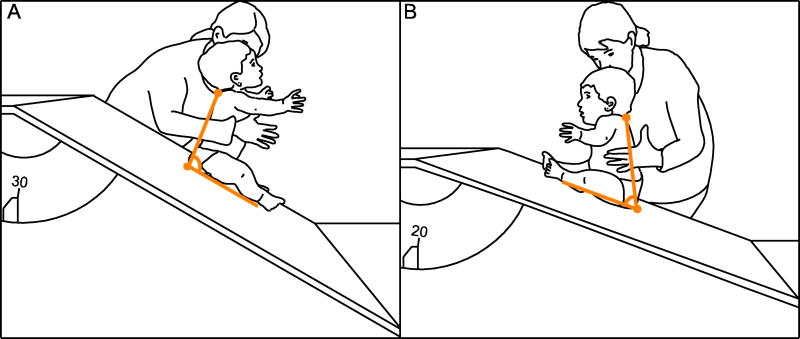Figure 2.
Line drawing of a typical infant in the (A) forward and (B) backward test directions at the average steepest “sitable” slopes that infants achieved. Because the slope only slanted in one direction, we created the two conditions by facing infants down or up the slope. Orange lines represent trunk-thigh angles derived from manual digitization of videos. (A) Forward: The trunk-thigh angle is 98°, so the infant is under-compensating (not leaning sufficiently backward). (B) Backward: The trunk-thigh angle is 63°, so the infant is slightly over-compensating (leaning slightly more forward than necessary).

